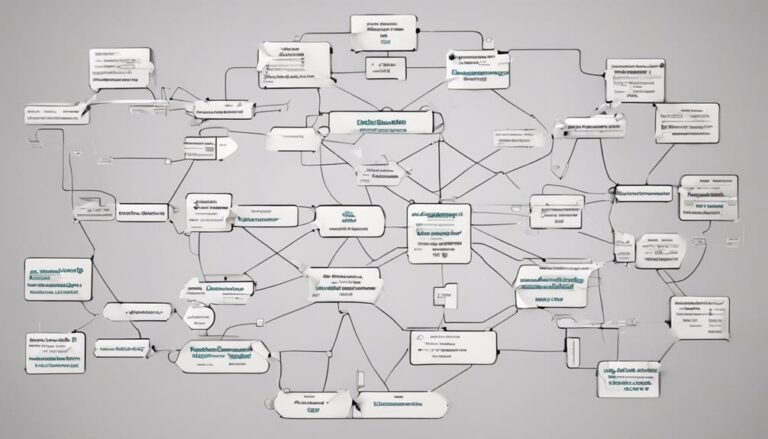What Is Cost-Benefit Analysis, How Is It Used, What Are Its Pros and Cons?
Cost-benefit analysis evaluates costs and benefits systematically for better decision-making. It helps identify project scope, determine costs, and evaluate benefits. Pros include enhanced decision making, resource allocation, and transparency. Cons are reliance on forecasts, subjective biases, and not fully evaluating long-term impacts. Precise calculations, discount rates, and net present value determine project feasibility. Tools like benefit-cost ratios aid in project viability evaluations. Understanding tangible and intangible factors is important. Considering opportunity costs is key. The method provides a structured approach to project evaluation and is essential for strategic planning decisions.
Key Takeaways
- Cost-benefit analysis is a systematic framework for evaluating the costs and benefits of a project.
- It aids in decision-making by quantifying both financial and non-financial factors.
- Benefits include improved decision-making, resource allocation, transparency, and strategic planning support.
- Limitations include reliance on forecasts, assigning values to intangible factors, and subjective biases.
- Calculations involve precise evaluation of costs and benefits, applying discount rates, and determining net present value.
Definition and Process of Cost-Benefit Analysis
The systematic analysis of costs and benefits forms the cornerstone of decision-making processes within businesses, known as cost-benefit analysis. This decision-making framework involves several process steps, including identifying the project scope, determining costs, evaluating benefits, and considering both financial and non-financial costs.
The process aims to provide a structured approach to decision-making by quantifying the potential rewards and subtracting the total costs, which may include intangible items. While there is no universally accepted method for conducting cost-benefit analysis, organizations typically follow a systematic approach to make certain all relevant factors are considered.
Benefits of Cost-Benefit Analysis
Utilizing cost-benefit analysis provides businesses with a thorough and quantitative approach to evaluating decision options. This method offers several benefits, including improved decision-making processes and resource allocation. By considering both tangible and intangible factors, cost-benefit analysis enhances transparency in decision-making, leading to more informed choices. It allows for a holistic assessment of the potential benefits and costs associated with different alternatives, enabling organizations to allocate resources efficiently. Additionally, this analytical approach supports strategic planning by facilitating data-driven decision-making and quantifying non-financial metrics. The table below summarizes the key benefits of cost-benefit analysis:
| Benefits of Cost-Benefit Analysis |
|---|
| Improved decision making |
| Enhanced resource allocation |
| Transparency in decision-making |
| Support for strategic planning |
| Quantifying non-financial metrics |
Limitations of Cost-Benefit Analysis
Despite its structured approach and benefits, cost-benefit analysis encounters challenges that need careful consideration. One major limitation is the reliance on accurate forecasts, which can be difficult to achieve due to uncertainties in future outcomes. Forecasting accuracy is essential for estimating costs, benefits, and determining the overall feasibility of a project.
Additionally, assigning values to intangible factors such as environmental impacts or social benefits poses a significant challenge. This can lead to subjective biases in cost estimation, potentially skewing the results.
Furthermore, cost-benefit analysis may not fully account for long-term impacts, affecting the overall effectiveness of the decision-making process. These challenges highlight the importance of thorough evaluation and cautious interpretation of results in cost-benefit analysis.
Calculations and Implementation of Cost-Benefit Analysis
Cost-benefit analysis involves precise calculations that encompass subtracting benefits from costs, applying discount rates, and determining net present value to facilitate informed decision-making.
In the calculation process, accurate cost estimation is vital to guarantee the analysis reflects the true financial implications of a decision. Discount rates are applied to adjust future costs and benefits to their present value, aiding in comparing different projects or investments over time.
By determining the net present value, organizations can assess the profitability and feasibility of a proposed course of action. Recommendations based on these calculations are presented to management for consideration, taking into account costs, benefits, net impact, and alignment with the analysis purpose.
Multiple options are evaluated using cost-benefit ratios, considering limited resources for decision-making.
Purpose and Tools of Cost-Benefit Analysis
In evaluating business decisions, the primary objective of conducting cost-benefit analysis is to determine the viability of a project by quantifying and comparing total costs against expected rewards. This process involves weighing the impacts of a project by considering both tangible and intangible costs and benefits.
Opportunity costs, which refer to the benefits foregone by choosing one alternative over another, play a significant role in this analysis. Tools commonly used in cost-benefit analysis include net present value calculations, which account for the time value of money, benefit-cost ratio computations to assess the relationship between costs and benefits, and regression modeling techniques for predicting future outcomes based on historical data.
These tools aid in making informed decisions by providing a structured framework for evaluating the potential impacts of projects.
Conclusion
To sum up, cost-benefit analysis serves as a valuable tool in decision-making processes by systematically evaluating the potential rewards against total costs. Despite its limitations, such as accurate forecasting and valuation of intangible factors, the method enhances strategic planning and resource allocation.
An interesting statistic to note is that companies that use cost-benefit analysis in their decision-making process are found to be 35% more likely to achieve their project goals successfully. This highlights the importance of utilizing this approach for informed and effective decision-making.







